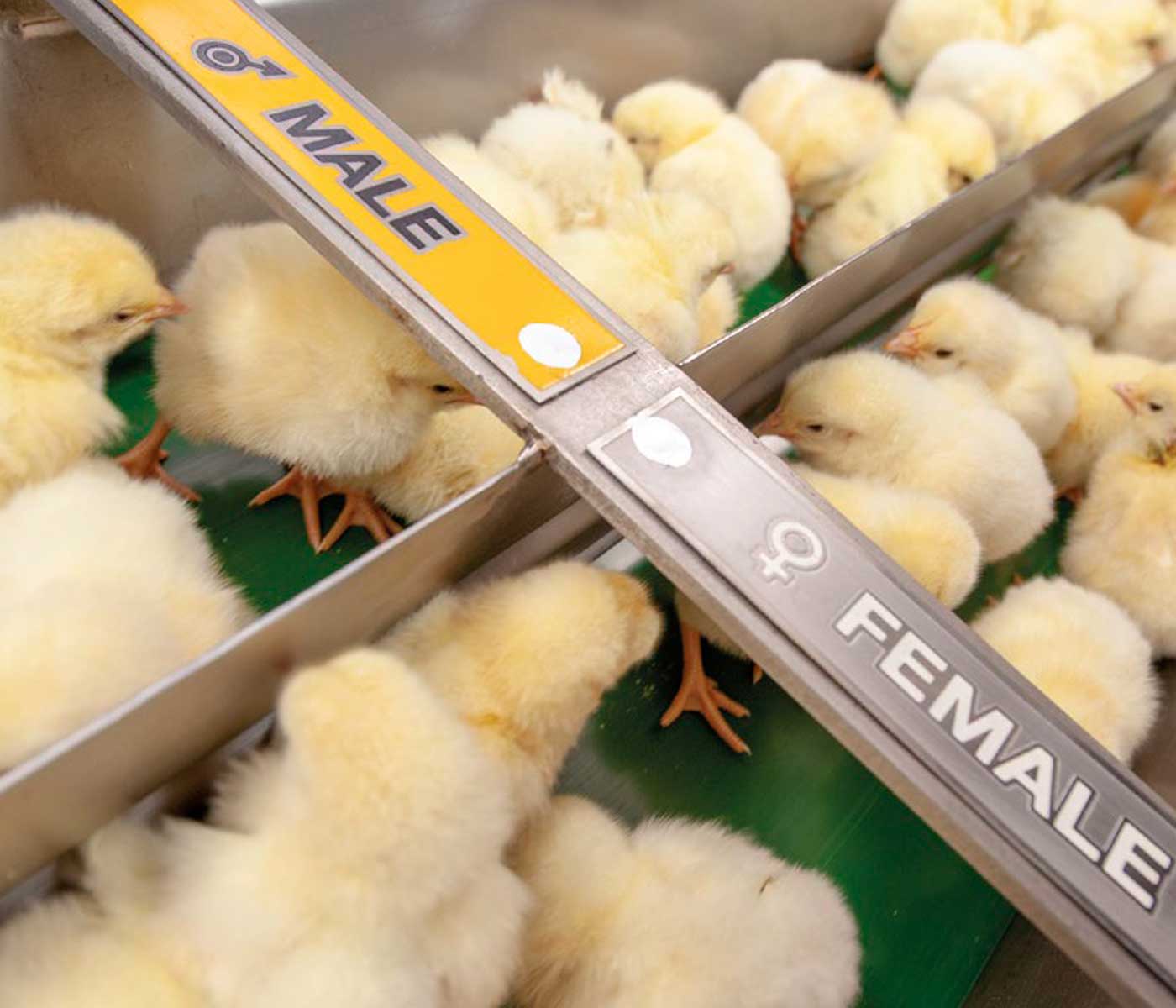Culling day-old chicks is getting less and less accepted in the modern world. After all, the awareness of animal welfare is gaining ground, particularly in Europe.
However, new technology is available now to determine gender in the egg during incubation. No future dreaming anymore, but reality. And practiced in Germany and The Netherlands already.
Everyone knows about the current and still common practice of culling day-old male chicks from layer breeds. After sexing, chicks end up in two batches: males and females.
- The latter will be raised to start their life as commercial layers. The males are culled, either by gassing or shredding and usually end up in alternative value chains, like being fed to zoo animals, processed in petfood, or biogas production.
- Regrettably there was no other solution, despite sometimes massive public protest for animal welfare. Raising males for meat production is an option.
- But as these birds have been bred specifically for the layer sector, they gain less weight and need a lot of feed because they are very active. So raising them for meat production is only a niche solution.
But good news for animal welfare!
New techniques have come into practice, such as the high tech respeggt method, making it possible to end this practice and improve animal welfare.
- As a result, male chicks will not hatch from the egg and thus they will not suffer either.
- Particularly this is good news for hatcheries of layer breeds in Germany, as culling day-old chicks is o fficially prohibited in this country since January 1, 2022.
- Also in European countries, like France and Italy, legislation has been defi ned already, and legislation in other countries is to be expected soon.
- After all, Europe was also in the forefront of the ban on conventional cages for layers, which came into practice in 2012.
- Fair chance that an EU wide ban on culling day-old chicks in the not too far away future, will also become reality.
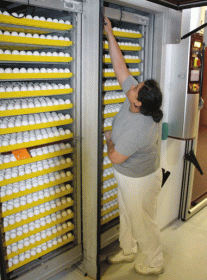 Image 1. Eggs arrive from hatcheries and are incubated in setters in the respeggt facility
Image 1. Eggs arrive from hatcheries and are incubated in setters in the respeggt facility
“A hatchery must have ample volume to make this technology within reach”, says Chief Operating Officer Carmen Uphoff of the respeggt group in Germany.
“Apart from the investment in the equipment, also ample room is needed inside the hatchery for logistics and storage capacity. Not every layer hatchery has this space available. However, missing space does never have to be a reason not to install this technology. Additional space can easily be realized by using container housing.”
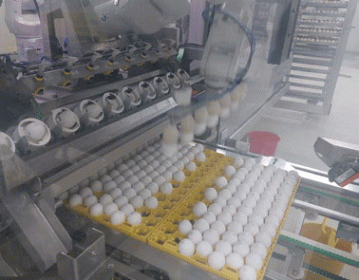 Image 2. At day 8-11 of incubation, the eggs are transferred onto the respeggt machine
Image 2. At day 8-11 of incubation, the eggs are transferred onto the respeggt machine
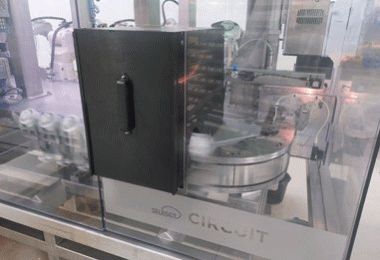 Image 3. In the candling device, the position of the air chamber and blood vessels is determined
Image 3. In the candling device, the position of the air chamber and blood vessels is determined
In order to make in-ovo sexing accessible, the respeggt group created a common facility, centrally located in the village of Barneveld in The Netherlands.
- Hatching eggs from various layer hatcheries in the country are taken here and incubated. Onwards, between day 8 to 11 of incubation, they are taken from the setters to the respeggt in-ovo sexing machine.
- This is well in time before an embryo is starting to experience pain. From scientific research it has been concluded that an embryo doesn’t experience pain, prior to day 13 of incubation.
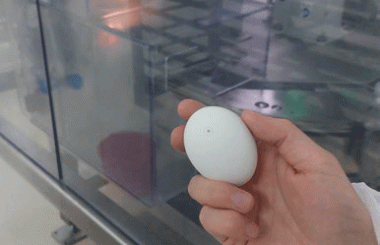 Image 4. A laser beam punches a 0.3 mm hole through the eggshell
Image 4. A laser beam punches a 0.3 mm hole through the eggshell
The respeggt technology consists of three steps:
- The so called Circuit extraction technology.
- The Lab (for analysis).
- The sorter (for sorting the hatching eggs).
The entire process must not take too long, otherwise the eggs are cooling down too much. Logically this means that also the temperature inside the respeggt room should not be too low.
- A robot arm on the Circuit transfers the eggs from the trays and places these into individual positions / cups on a kind of carrousel belt.
- Software exactly registers which egg is in which cup. Firstly the eggs pass through an electronic candling device.
- This device replaces candling which normally is done in a regular layer hatchery.
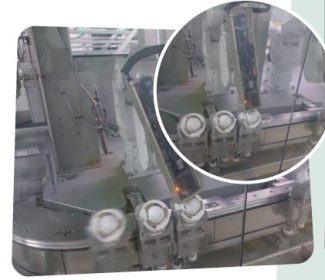
The candling unit precisely determines whether there is an embryo in development inside the egg and if so, where blood vessels and the air chamber are located.
Depending on these data and the positioning of the egg in the cup, a laser beam will onwards punch a hole of only 0.3 mm through the eggshell.
- Next, by means of vacuum suction, a minuscule drop of fluid is taken out of the egg through this hole and put in a small tube.
- This tube is positioned in a small plastic tray, which corresponds through a barcode with the position of the eggs on the tray from which these were transferred into the machine from the setter.
- The barcode also corresponds with the eggs from which the fluid was taken. This prevents errors and thus safeguards accuracy of the system.

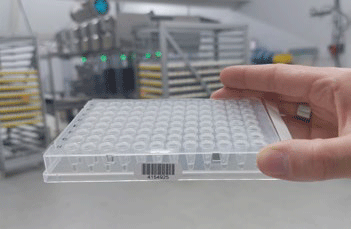 Image 7. A barcode on the small tray with samples precisely refers to each individual egg
Image 7. A barcode on the small tray with samples precisely refers to each individual egg
After taking the egg fluid from the eggs, the minuscule hole in each eggshell is closed again by putting wax on it. Next, the eggs are taken from the carrousel and transferred back on trays again. These trays are kept in trolleys in the incubator until the result of the laboratory analysis is available.
Once the samples have been collected, the small plastic trays are taken for in-ovo sexing to the Lab, located adjacent to the hatchery.
- Here, additional fluids are added to the sample from the hatching eggs.
- All this happens within well plates.
- Then, through current PCR technology, the DNA of the embryos is determined. Data from the PCR analysis are available in about one hour and are then visible on a computer screen.
- Clearly the gender of each egg is displayed: males colour blue, females pink.
- Eggs without an embryo, most likely infertile, colour blank.
“Accuracy of the in-ovo sexing accounts 99 percent”, says Carmen Uphoff. “This is a very satisfying figure, most likely even more precise than from manual sexing.”
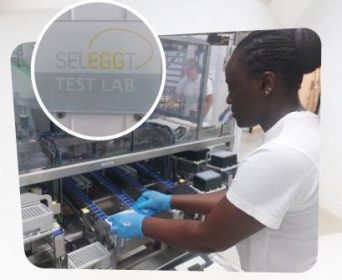
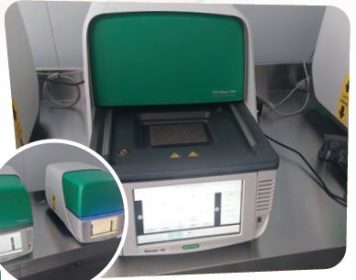
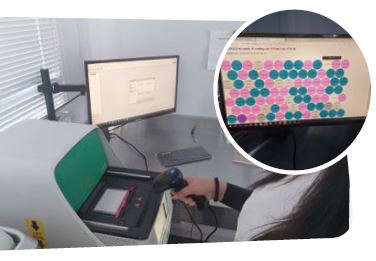
Once the gender has been determined, the eggs are taken from the trays and transferred into the Sorter.
- Based on the results of the PCR analysis, the eggs with a female chick embryo will then be sorted out, put on trays and stamped with the female symbol and taken back to the hatchery where they originated from.
- Here they will further be incubated and hatch.
The eggs with a male embryo will be taken to a nearby situated animal feed processor. This company is specialized in processing unfertilized eggs from hatcheries and cracked table eggs into valuable ingredients for the pet food industry.
- The “male” eggs from respeggt will fit well to this procedure.
- As mentioned, a chick embryo does not suffer from pain until day 13 of incubation.
- So this will also meet the criteria from an animal welfare point of view.
 Image 14. Based on the gender determination, through the sorter the eggs are put in the setter trays again and taken back to the hatcheries to be further incubated
Image 14. Based on the gender determination, through the sorter the eggs are put in the setter trays again and taken back to the hatcheries to be further incubated
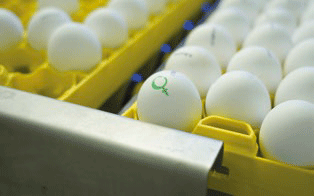 Image 15. Eggs with a hen embryo inside are stamped with the female symbol
Image 15. Eggs with a hen embryo inside are stamped with the female symbol
The Barneveld facility currently delivers about 5 million “female eggs” annually, obtained from about 12 million eggs. This is one equipment set (Circuit, Lab and Sorter). For large size commercial egg producers who raise large flocks, this might be a limiting factor, since in this stage in-ovo sexing does not yet handles large volumes.
The more sets a hatchery orders however, the higher the capacity of course. Hatcheries benefit from this new technology, as they can charge a higher price per female chick and improve animal welfare.
Next to the Barneveld facility, respeggt technology has been installed in another hatchery in The Netherlands, and an existing hatchery in Germany (Lohmann Germany). Also technology in a Norwegian hatchery is about to be installed.
It is clear that this new respeggt technology is a major step forward and certainly has paved the way for further development. No more science fiction, but reality!
PDF
